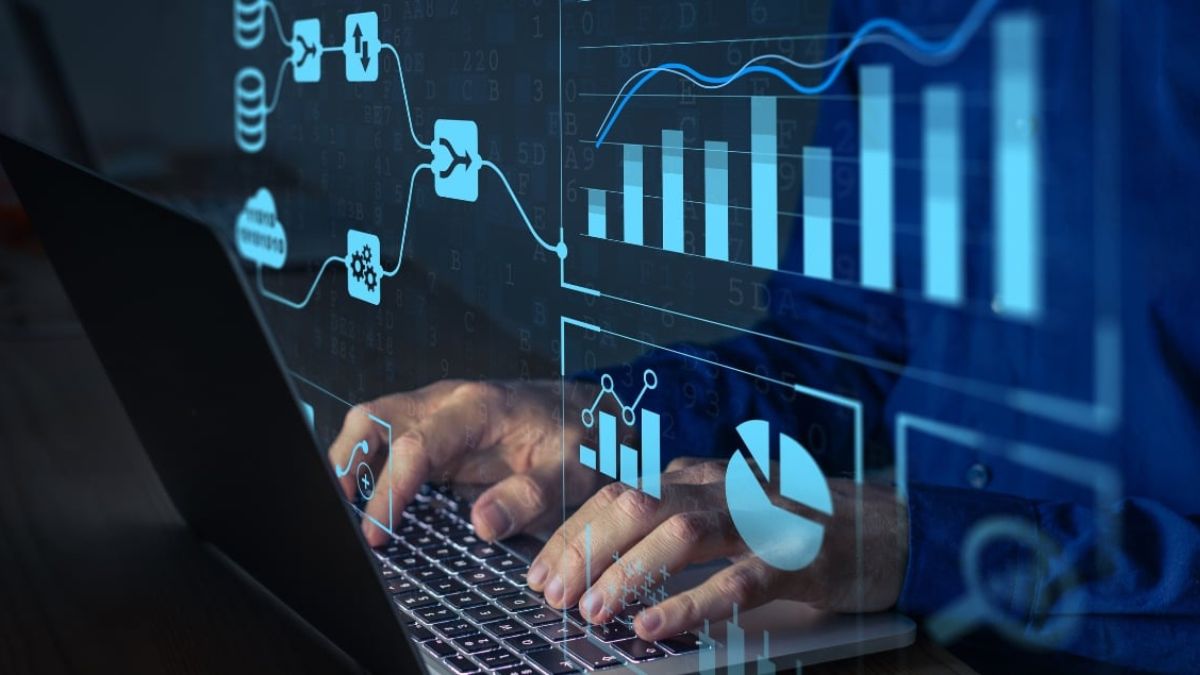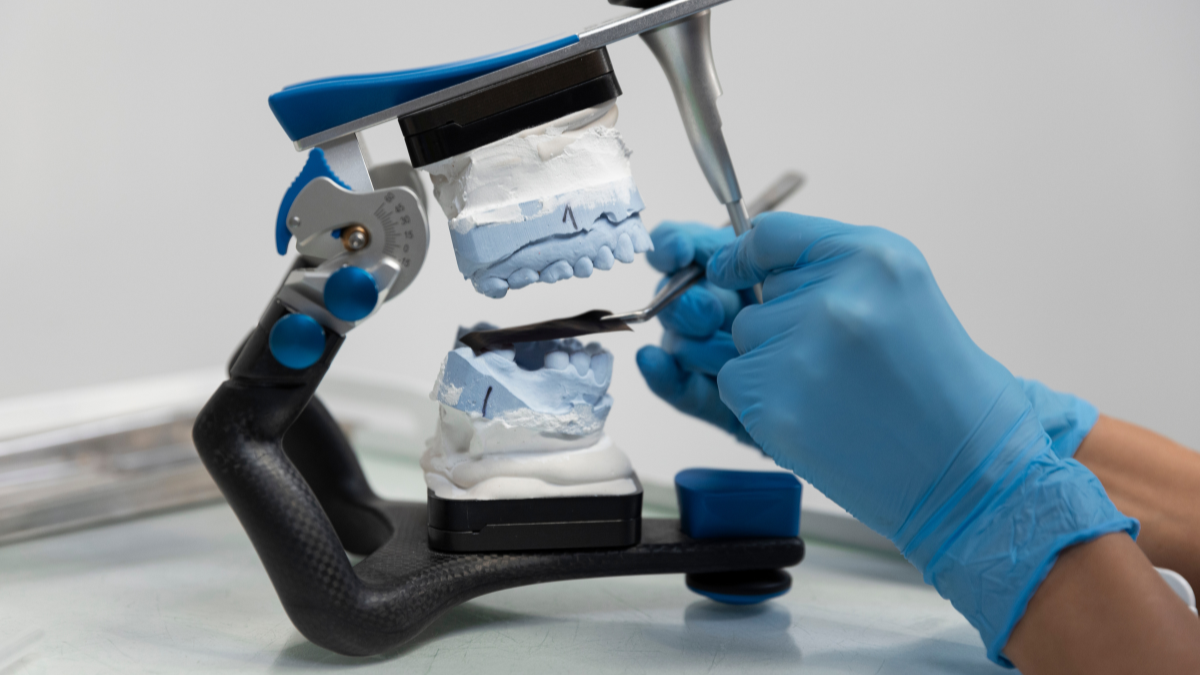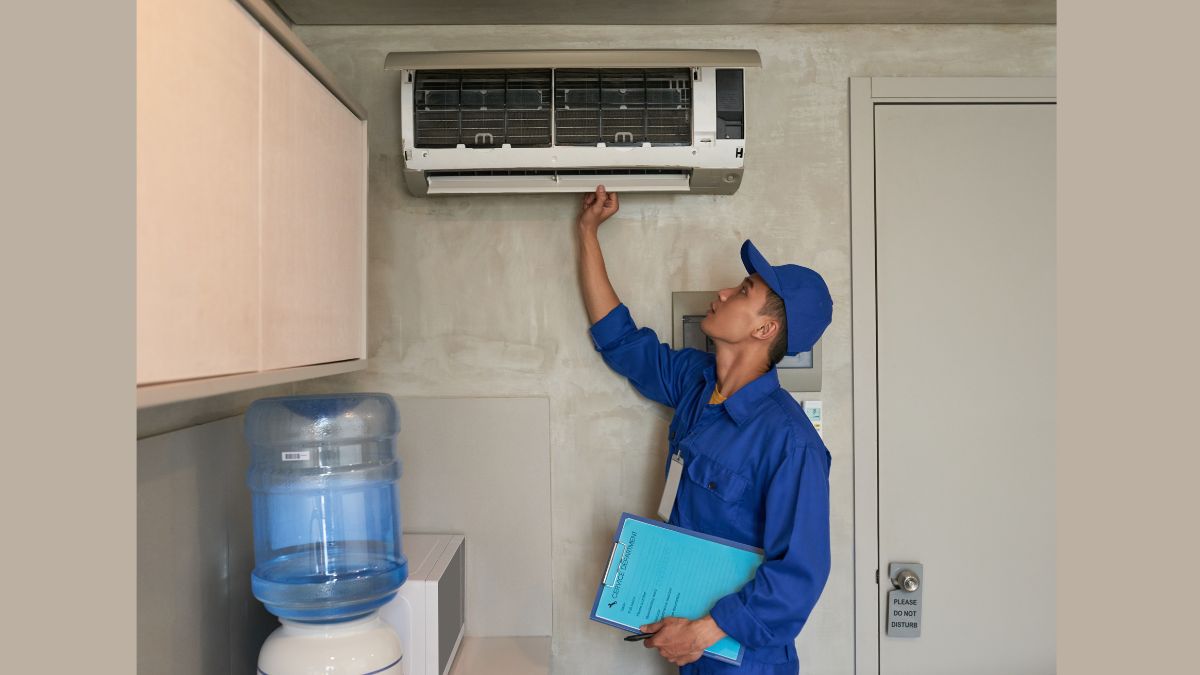TECHNOLOGY
Top 7 Reasons Why Remote Data Science & Data Engineering Jobs Are on the Rise

The world of work is changing, and one of the biggest shifts we’ve seen is the rise of remote jobs. From tech companies to large corporations, remote work is becoming the norm. One area that’s growing especially fast is the field of data science and engineering. As more companies embrace the idea of working from home or other locations, data scientist remote jobs and data engineer remote jobs are becoming more common and desirable.
So, what’s driving this change, and why are remote data jobs on the rise? In this article, we’ll go over the top 7 reasons why remote jobs for data scientists and other data-related roles are gaining popularity.
1. The Need for Data Professionals Is Growing Fast
First and foremost, the demand for skilled data professionals is skyrocketing. Almost every business today relies on data to make decisions. Whether it’s improving customer experience, predicting trends, or streamlining operations, data is at the heart of decision-making in almost every industry.
With this increasing demand, companies are looking for ways to fill data roles more efficiently, which is where remote data scientist jobs and data engineer remote jobs come in. Remote work allows companies to access a much wider pool of talent, including professionals from around the world. This is especially important when the competition for skilled data workers is so high.
2. Remote Work Provides Flexibility and Work-Life Balance
One of the biggest advantages of working remotely is the flexibility it offers. Whether you’re a data scientist or a data engineer, working from home or another location means you can better manage your schedule. There’s no need to commute, which saves both time and money. Plus, remote jobs give you the freedom to work from anywhere in the world. You can work from home, a coffee shop, or even while traveling.
This flexibility has made remote data jobs even more attractive. Many people are choosing remote data scientist jobs and data engineering positions simply because they offer a better work-life balance and fewer stressors. Remote work enables you to plan your day around your life, not the other way around.
3. Companies Are Going Global with Their Hiring
In today’s digital world, companies no longer need to be limited by location when hiring. With cloud computing, data storage systems, and online collaboration tools, businesses can hire the best talent from anywhere. Whether you’re based in New York, London, or a small town, remote data jobs allow you to work for companies that would have previously only hired local candidates.
For remote jobs for data scientists and data engineer remote jobs, this shift has opened up an enormous job market. Professionals now have access to a global range of opportunities, and companies can find the right talent, no matter where they’re located. The ability to hire worldwide means businesses can select the best of the best, leading to more innovation and better results.
4. The Tech Industry Is Built for Remote Work
Tech companies, including those hiring for data scientist remote jobs, are naturally well-equipped for remote work. Much of the work done by data scientists and data engineers involves using powerful software and cloud tools that don’t require physical presence in an office. With platforms like Google Cloud, AWS, and various data analysis tools, data professionals can easily complete their tasks remotely.
Since the tools and technologies required for data jobs are accessible online, remote work in data science and engineering is not just possible—it’s often preferred. Many tech companies were among the first to embrace remote work, and they have set the tone for other industries to follow.
5. Cutting Costs for Businesses and Employees
Remote work isn’t just beneficial for employees; it’s also a big win for businesses. Companies that allow their teams to work from home save money on overhead costs like office space, utilities, and supplies. Additionally, they often find that remote workers are just as productive (if not more) than those working in a traditional office setting.
For employees, working remotely eliminates the need for a daily commute, saving time and money. As a data scientist, this means more time spent on tasks that truly matter—analyzing data, creating models, and providing insights—rather than wasting hours in traffic.
6. The Rise of Remote Collaboration Tools
One of the reasons remote data science and data engineering roles have taken off is because of the rise of powerful collaboration tools. Thanks to platforms like Slack, Zoom, Microsoft Teams, and GitHub, remote teams can stay connected and productive no matter where they are located. These tools make it easy to share data, hold virtual meetings, and work on projects in real time.
For remote data scientist jobs and remote data engineer jobs, these tools are essential for collaboration. Data professionals can work closely with colleagues, review data sets, and discuss strategies just as effectively as they would in an office environment. These tools are built for remote work and help maintain strong team cohesion, even across time zones.
7. A Growing Focus on Results, Not Hours Worked
Remote work emphasizes results over hours spent in the office. Many data professionals prefer this, as they can focus on producing high-quality work without the pressure of adhering to a strict 9-to-5 schedule. This shift has made remote jobs for data scientists and data engineers particularly appealing, as it allows for more autonomy and personal control over work.
As long as the work gets done, many companies no longer require employees to clock in at a specific time or work a set number of hours. This results-driven culture is especially beneficial for data scientists and engineers, who often need deep focus and flexibility to solve complex problems. Remote jobs allow these professionals to work during their most productive hours and create better results.
Conclusion: Why Remote Data Jobs Are the Future
There’s no doubt that remote data scientist jobs and data engineer remote jobs are on the rise. The demand for data professionals is growing rapidly, and remote work offers the flexibility, global opportunities, and cost savings that many employees and businesses value. Remote data jobs allow professionals to balance their work and personal lives, collaborate with global teams, and deliver excellent results from anywhere in the world.
If you’re considering a career in data, or if you’re already working in the field, embracing remote work could be one of the best decisions you make. The future of data science and engineering is remote, and now is the perfect time to join this exciting and rapidly evolving field.
TECHNOLOGY
iCostamp: Decoding, Understanding, and Utilizing This Technology

In a digital-first world where technology evolves rapidly, a new term has started to capture attention across tech and business spaces: iCostamp. Although still unfamiliar to many, iCostamp is poised to become a transformative element in various industries, especially in document authentication, digital transactions, and cost tracking.
This comprehensive guide explores what iCostamp is, how it works, its core technologies, and how it can be effectively utilized in modern business and tech ecosystems.
What Is iCostamp?
iCostamp is a conceptual or emerging technological framework that appears to blend two core ideas: “intelligent cost” and “timestamping.” At its essence, it refers to a smart, verifiable digital system for stamping or recording cost-related events in a secured, time-sensitive manner.
Whether used in blockchain environments, enterprise resource planning (ERP) systems, or logistics chains, iCostamp provides a mechanism to accurately log and validate the cost of transactions or processes at precise moments in time.
Think of it as a digital receipt that’s:
-
Tamper-proof
-
Time-locked
-
Context-aware
-
Cost-specific
The Core Components of iCostamp Technology
To understand iCostamp better, we must examine its core building blocks. These are the foundational technologies or systems that make iCostamp functional and valuable:
1. Timestamping Protocols
iCostamp integrates timestamping — a technique that digitally records the time at which a specific event occurred. This ensures chronological integrity and is widely used in:
-
Blockchain transactions
-
Digital notarization
-
Compliance audits
2. Cost Encoding Systems
The “cost” component refers to monetary values or resource expenditure, which can include:
-
Unit pricing
-
Resource allocation
-
Energy consumption
-
License usage fees
iCostamp encodes these values into the digital record along with contextual metadata.
3. Digital Signature Integration
To ensure authenticity and prevent tampering, iCostamp often incorporates cryptographic signatures. This verifies the identity of the sender and ensures that the content remains unchanged.
4. Smart Contract Compatibility
In blockchain and Web3 applications, iCostamp can be integrated into smart contracts to automate payments, monitor cost milestones, or trigger cost-based events.
Applications of iCostamp Technology
iCostamp’s versatility makes it suitable for a wide range of industries and use cases. Let’s break down some of the most promising applications:
1. Finance and Invoicing
Businesses can use iCostamp to:
-
Log and verify invoices
-
Prevent duplicate or fraudulent billing
-
Create an immutable ledger of financial transactions
This adds transparency and traceability to every transaction made.
2. Supply Chain and Logistics
In shipping or manufacturing, iCostamp can track:
-
Cost of transportation at each checkpoint
-
Currency conversion at different stages
-
Resource consumption with timestamped documentation
This helps companies optimize operations and reduce costs.
3. Digital Asset Management
For NFT markets, SaaS subscriptions, or online marketplaces, iCostamp allows platforms to:
-
Timestamp licensing fees
-
Verify proof of purchase
-
Log recurring costs for users or assets
4. Energy and Utility Billing
Utilities can use iCostamp to record:
-
Peak vs. off-peak usage costs
-
Time-of-use energy consumption
-
Real-time billing with user consent
This leads to more transparent billing systems for consumers.
5. Legal and Compliance
iCostamp is also ideal for regulatory environments where timestamped financial data is critical. It helps:
-
Demonstrate financial compliance
-
Maintain audit trails
-
Prove the timing of contractual cost obligations
iCostamp vs Traditional Timestamping Systems
You may wonder how iCostamp differs from basic timestamping tools already available. Here’s a comparison:
| Feature | Traditional Timestamp | iCostamp |
|---|---|---|
| Time Logging | ✅ | ✅ |
| Cost Encoding | ❌ | ✅ |
| Context-Aware Metadata | ❌ | ✅ |
| Tamper-Proof | Somewhat | ✅ (with encryption) |
| Blockchain Integration | Optional | Fully Compatible |
| Use Cases | Limited | Broad and Dynamic |
Essentially, iCostamp enhances traditional timestamping by introducing cost-awareness, security, and interoperability across platforms.
Advantages of Implementing iCostamp
Adopting iCostamp in your organization or digital system can offer multiple benefits:
✅ Improved Accountability
Each transaction is tied to a cost and a timestamp, making it harder to falsify or misrepresent data.
✅ Enhanced Transparency
Clients and stakeholders can easily trace where costs were applied and when.
✅ Better Automation
In environments like smart contracts or ERP systems, iCostamp triggers cost-based logic that reduces the need for manual review.
✅ Scalable and Secure
With blockchain and API-based architecture, iCostamp can be easily scaled across multiple departments or geographies.
✅ Regulatory Compliance
Industries with strict cost-reporting standards (like healthcare, finance, or government) can use iCostamp to satisfy audit and legal requirements.
Challenges and Considerations
Despite its promising outlook, iCostamp isn’t without potential challenges:
1. Integration Complexity
Implementing iCostamp into legacy systems may require API customization and middleware.
2. Data Privacy
Since iCostamp records sensitive cost and time data, organizations must ensure compliance with data protection laws such as GDPR or CCPA.
3. Initial Investment
While cost-saving in the long term, iCostamp integration may require upfront investment in infrastructure and training.
How to Start Using iCostamp
If you’re considering adopting iCostamp, here’s how you can get started:
Step 1: Identify the Use Case
Are you tracking transactions? Managing subscriptions? Optimizing supply chains? Pinpoint where cost and time intersect in your workflow.
Step 2: Choose a Compatible Platform
Select software or blockchain solutions that support API-based iCostamp integration.
Step 3: Customize Cost Fields
Define what types of costs (e.g., monetary, energy, data use) will be stamped and how.
Step 4: Enable Real-Time Monitoring
Use dashboards and analytics to monitor iCostamp’s logs and extract actionable insights.
Step 5: Ensure Legal Compliance
Work with legal and compliance teams to ensure all data usage respects jurisdictional laws and industry standards.
Future of iCostamp Technology
As the world moves toward real-time data processing and autonomous transactions, iCostamp’s stands to play a key role. With the growth of AI, IoT, and blockchain, demand for systems that can securely and intelligently track costs is increasing.
In the near future, we can expect:
-
Wider adoption in FinTech and DeFi
-
iCostamp standards for digital documentation
-
AI-powered cost analysis tools using iCostamp logs
-
Open-source iCostamp libraries for developers
Conclusion
iCostamp is more than a buzzword—it’s a transformative technology that merges intelligent cost management with verifiable timestamps. It’s especially relevant in a time when data integrity, digital transparency, and cost accountability are more important than ever.
From finance and logistics to compliance and energy, iCostamp’s has the potential to revolutionize how organizations track, analyze, and trust their cost data. As this technology matures, early adopters will gain the advantage of greater efficiency, reliability, and foresight in their operations.
TECHNOLOGY
The Evolution of Dental Crowns: A Journey Through Technological Progress

Dental crowns have long been a cornerstone of restorative dentistry. Used to repair and protect damaged teeth, crowns restore not only functionality but also appearance. Traditionally, patients had to endure long waits, multiple appointments, and uncomfortable impressions. Today, however, advanced tools like CEREC technology have transformed this process. The evolution of dental crowns has been a journey from manual craftsmanship to high-tech precision — making the patient experience faster, more comfortable, and more reliable than ever.
The Traditional Approach: Artistry and Time
In the past, the process of getting dental crowns could span several weeks. Dentists would begin with a physical impression of the tooth using a tray filled with putty-like material. This step often triggered discomfort or even a gag reflex in patients. Afterward, the mold would be sent to a dental lab where a skilled technician would craft the crown by hand — a meticulous and time-consuming process. Once the crown was ready, patients had to return for a second visit to have it fitted and cemented. If the fit or color wasn’t perfect, further adjustments or even a remake were needed, extending the treatment time. Although the final results were often effective, the process was labor-intensive and left room for human error.
A Digital Revolution: CAD/CAM and Beyond
The first significant leap in dental crowns came with the introduction of CAD/CAM (Computer-Aided Design/Computer-Aided Manufacturing) systems. This technology brought computer precision into the dental world. Digital scanners began to replace traditional impression materials, allowing for more accurate imaging of a patient’s teeth. CAD/CAM software could then design a virtual model of the crown, which could be milled from ceramic blocks by computer-guided machines. This greatly improved both the speed and precision of crown production. Although initially limited to dental laboratories, this technology laid the groundwork for in-clinic innovation — most notably, the advent of CEREC technology.
CEREC Technology: A Game-Changer
Short for Chairside Economical Restoration of Esthetic Ceramics, CEREC technology has redefined the crown-making process. With CEREC, patients can now receive custom-made dental crowns in a single visit — often within just a couple of hours. Here’s how it works:
- Digital Imaging: A small camera scans the affected tooth, creating a highly accurate 3D model — eliminating the need for messy impressions.
- Design Software: The dentist uses CEREC’s software to design the crown on-screen, ensuring perfect shape, bite alignment, and aesthetics.
- In-House Milling: A milling unit located right in the dental office carves the crown from a ceramic block based on the design.
- Immediate Placement: After some finishing touches and color adjustments, the crown is polished, bonded, and fitted — all in one visit.
The entire process is streamlined, efficient, and much more comfortable for the patient.
Benefits of Modern Crown Technology
Thanks to innovations like CEREC technology, the experience of getting dental crowns is more patient-friendly and efficient. Some key benefits include:
- Time Savings: Single-visit crowns eliminate the need for temporary restorations and follow-up appointments.
- Accuracy: Digital impressions are more precise, reducing the risk of ill-fitting crowns and the need for remakes.
- Comfort: No more goopy molds or temporary crowns that can fall off or irritate gums.
- Aesthetics: Ceramic materials closely mimic the natural appearance of teeth, and color can be customized chairside.
- Durability: CEREC crowns are strong and long-lasting, capable of withstanding normal biting and chewing forces.
The Role of Artificial Intelligence and Future Developments
Beyond CEREC, the next wave of technology in dental crowns involves artificial intelligence (AI) and machine learning. AI-driven systems can now help detect decay, suggest optimal crown designs, and even predict long-term outcomes. Integration with intraoral scanners and cloud-based platforms allows dentists to collaborate seamlessly with labs and specialists across the globe. In the near future, we may also see biocompatible materials that better integrate with natural tissues, or even smart crowns embedded with sensors to monitor bite pressure and oral health in real time.
A New Era of Dental Restoration
The journey of dental crowns — from hand-crafted restorations to computer-designed masterpieces — is a testament to how far dentistry has come. What was once a multi-week ordeal is now a same-day, high-precision solution, thanks in large part to CEREC technology. This evolution not only enhances clinical efficiency but also transforms the patient experience. In a world where time and comfort matter more than ever, modern crown technologies offer a blend of convenience, function, and aesthetics that was unimaginable just a few decades ago. As dental technology continues to evolve, so too will the possibilities for restorative care — making smiles healthier, faster, and more beautiful with each innovation.
TECHNOLOGY
What Are the Signs You Need AC Repair Services in Maryland?

As Maryland’s summer heat intensifies, a well-functioning air conditioning system becomes essential for maintaining indoor comfort. However, even the most reliable AC units can develop issues over time. Recognizing the early signs of malfunction can prevent costly repairs and ensure uninterrupted cooling. Below are the key indicators that suggest the need for AC repair services in Maryland.
Signs for AC Repair Services in Maryland
1. Weak Airflow and Insufficient Cooling
One of the most common signs of AC trouble is weak airflow. If your system struggles to circulate cool air effectively, it may be due to clogged air filters, a failing compressor, or ductwork obstructions. Homeowners in Maryland should address this issue promptly to avoid discomfort during peak summer months.
2. Unusual Noises During Operation
A properly functioning AC unit operates quietly. If you hear grinding, squealing, or banging sounds, it could indicate loose components, a worn-out belt, or motor failure. Ignoring these noises may lead to more extensive damage, requiring emergency AC repair in Maryland.
3. Unpleasant Odors from Vents
Foul smells emanating from your air conditioning system can signal mold growth, burnt wiring, or trapped moisture. Musty odors often indicate biological contamination, which is common in Maryland’s humid climate. A professional air conditioning repair service in Maryland can diagnose and resolve these issues effectively.
4. Increased Energy Bills Without Increased Usage
A sudden spike in electricity bills without a change in usage patterns suggests inefficiency in your AC system. This could be due to failing components, restricted airflow, or refrigerant leaks. Addressing these concerns early can prevent excessive energy consumption and reduce costs.
5. Frequent Cycling or Constant Running
If your AC unit cycles on and off frequently or runs continuously without achieving the desired temperature, it may be struggling with thermostat issues, low refrigerant levels, or dirty coils. These problems can lead to premature wear and tear, necessitating AC repair in Maryland.
Table 1: Common AC Issues and Their Causes
| Issue | Possible Cause |
| Weak airflow | Clogged filters, duct obstructions |
| Unusual noises | Loose components, failing motor |
| Bad odors | Mold growth, burnt wiring |
| High energy bills | Inefficient cooling, refrigerant leaks |
| Constant running | Thermostat malfunction, dirty coils |
6. Thermostat Malfunctions
A faulty thermostat can cause inconsistent cooling, leading to discomfort and inefficiency. If your AC fails to maintain the set temperature, recalibrating or replacing the thermostat may be necessary.
7. Moisture or Leakage Around the Unit
Excess moisture or refrigerant leaks around the AC unit indicate potential system failure. Refrigerant leaks can compromise cooling efficiency, while water accumulation may lead to mold growth and structural damage.
8. Delayed Response to Temperature Adjustments
If your AC takes longer than usual to respond to thermostat changes, it may be experiencing electrical or sensor issues. A timely AC repair service in Maryland can restore optimal performance.
Table 2: Signs That Require Immediate AC Repair
| Sign | Urgency Level |
| Loud noises | High |
| Refrigerant leaks | High |
| Weak airflow | Medium |
| Increased energy bills | Medium |
| Thermostat issues | Low |
Conclusion
Recognizing the early signs of AC trouble is crucial to ensuring your comfort during Maryland’s hot summer months. Whether it’s weak airflow, unusual noises, or increased energy bills, addressing these issues promptly can prevent costly repairs and keep your system running smoothly. If you’re experiencing any of these signs, don’t hesitate to contact First Response Heating & Cooling for reliable and efficient AC repair services in Maryland. Our team is here to restore your home’s comfort with expert solutions tailored to your needs.
-

 BLOG5 months ago
BLOG5 months agoSlothokiturbo.net: Exploring the World of Online Gaming and Community
-

 BLOG2 months ago
BLOG2 months agoLiteroticatags: Exploring the World of Erotica and Its Online Community
-

 TECH6 months ago
TECH6 months agoMansrufer: Pioneering Progress in Technology
-

 BLOG5 months ago
BLOG5 months agoUse 1.5f8-p1uzt – A Comprehensive Guide!
-

 BLOG6 months ago
BLOG6 months agoErothtos: Understanding Its Role in Today’s World 2025
-

 BLOG6 months ago
BLOG6 months agoWatchmenontheall Calvin: An Exploration of Themes, Characters, and Significance
-

 TECH6 months ago
TECH6 months agoEggFinder TX Rev C5: A Comprehensive Review and Guide
-

 BLOG2 months ago
BLOG2 months agoJonathonSpire: We Learn About Her Career
